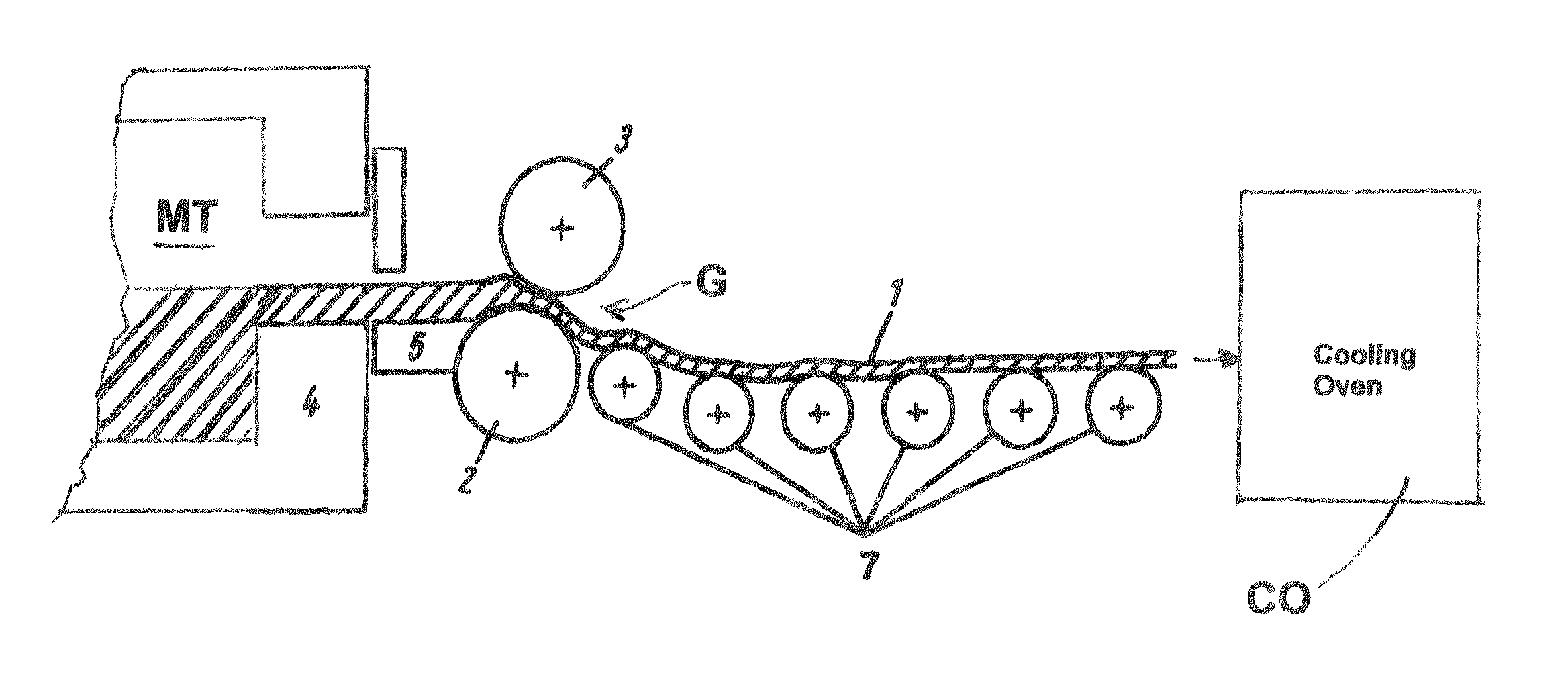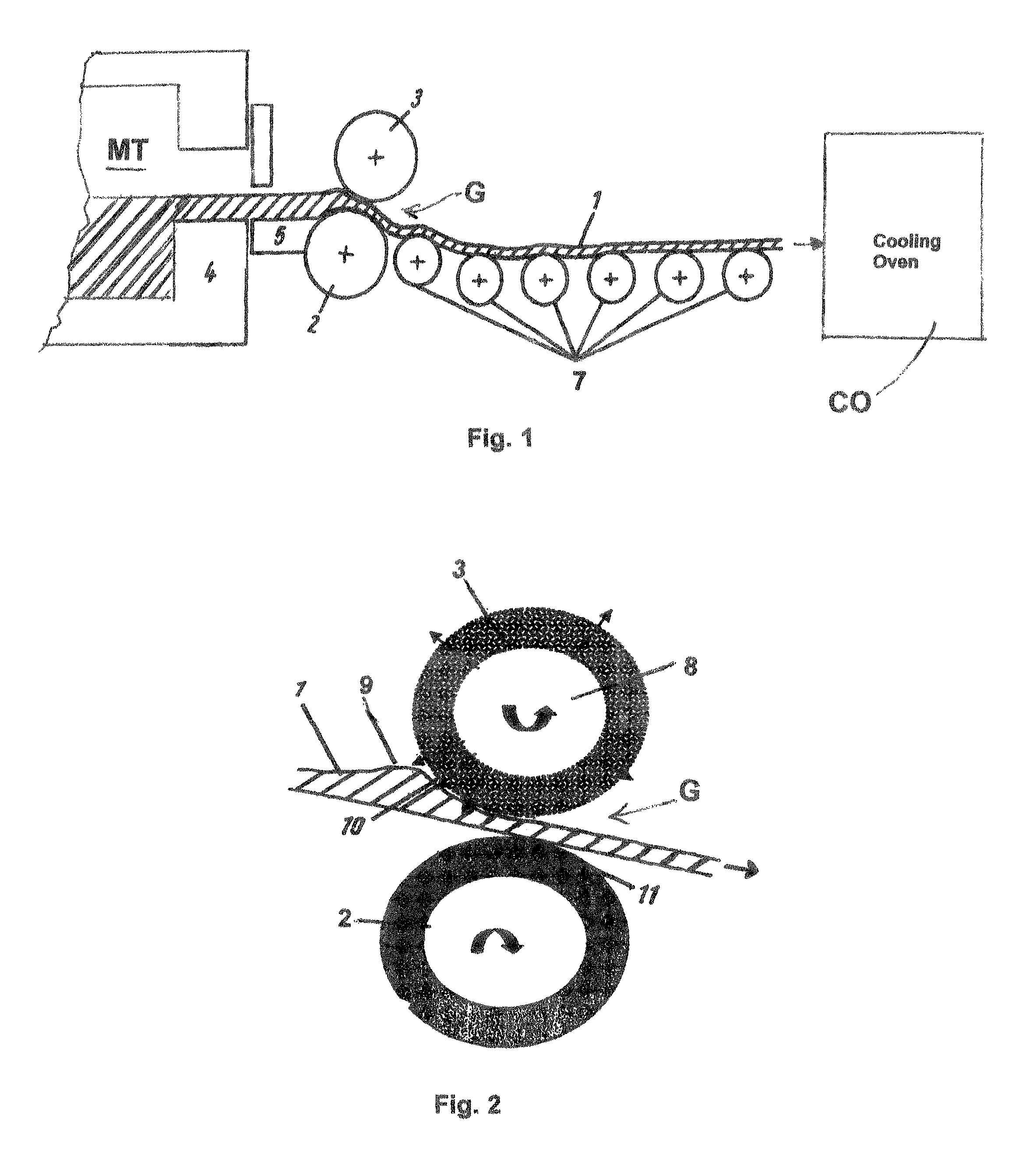Method of continuously producing flat glass by rolling
a technology of flat glass and rolling glass, which is applied in the direction of glass transportation equipment, glass making equipment, glass shaping equipment, etc., can solve the problems of high investment cost high maintenance costs, and high risk of affecting the quality of float glass plants, so as to reduce operating costs, improve surface quality, and reduce surface defects
- Summary
- Abstract
- Description
- Claims
- Application Information
AI Technical Summary
Benefits of technology
Problems solved by technology
Method used
Image
Examples
example
[0036]A glass flow coming from a glass melt tank at a temperature of about 1400° C. was rolled between two shaping rollers 2, 3 with a diameter of 160 mm, which rotate a 4 rpm. The rollers had a spacing of 4 mm from each other. The upper shaping roller comprises a hollow cylinder with a porous cylindrical jacket having a thickness of 45 mm, a porosity of 50% and permeability for water of 1×10−13 m2. The upper shaping roller was acted on with distilled water under a pressure of 250 kPa. The lower shaping roller was constructed in the same manner. In operation the temperature of the roller surfaces was about 400° C. to 450° C. A gas cushion of less than or equal to 0.1 mm formed between the upper roller and the glass sheet by steam vaporized in the pores of the upper shaping roller. The pressure was adjusted in the lower shaping roller so that a contact zone of a 5 to 30 mm width resulted between the lower shaping roller and the glass sheet. The surface quality of the upper surface of...
PUM
| Property | Measurement | Unit |
|---|---|---|
| width | aaaaa | aaaaa |
| width | aaaaa | aaaaa |
| thickness | aaaaa | aaaaa |
Abstract
Description
Claims
Application Information
 Login to View More
Login to View More - R&D
- Intellectual Property
- Life Sciences
- Materials
- Tech Scout
- Unparalleled Data Quality
- Higher Quality Content
- 60% Fewer Hallucinations
Browse by: Latest US Patents, China's latest patents, Technical Efficacy Thesaurus, Application Domain, Technology Topic, Popular Technical Reports.
© 2025 PatSnap. All rights reserved.Legal|Privacy policy|Modern Slavery Act Transparency Statement|Sitemap|About US| Contact US: help@patsnap.com


